By Dilek Barlow
This hearty soup is wonderful to eat on a cold winter day. Originally from southeast Anatolia, the origin of this soup is attributed to an exceptionally beautiful woman named Ezo, who lived in the village of Dokuzyol near Gaziantep in the early 20th century. Legend has it that Ezo, with her rosy cheeks and black hair, was admired by travelers along the caravan route who stopped to rest in her village. Many men longed for her hand in marriage and Ezo’s family hoped to secure a worthy match for their daughter.
Unfortunately, Ezo the bride (gelin), didn’t have much luck when it came to finding marital bliss. Her first husband was in love with another woman and she divorced him on grounds of maltreatment. Her second marriage took her to Syria where she became homesick for her village and had to deal with a difficult mother-in-law who couldn't be pleased. It is for her, the story goes, that Ezo created this soup. After bearing 9 children, poor Ezo died of tuberculosis in the 1950s and has since become a Turkish legend, depicted in popular films and lamented in folksongs. Her name lives on in this popular soup, which is now traditionally fed to brides to sustain them for the uncertain future that lies ahead.
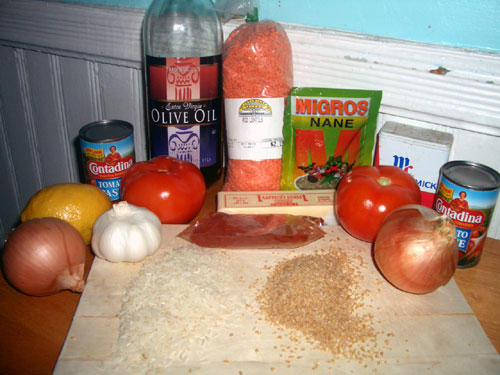
Gather together your ingredients: virgin olive oil, butter, 1 large onion, garlic,
1 large tomato, tomato paste, paprika, red pepper, red lentils, rice, bulgur, dried mint,
black pepper & salt, lemon wedges.
In a medium-size saucepan, heat 2 tablespoons of virgin olive oil and 2 tablespoons
of butter over a medium flame.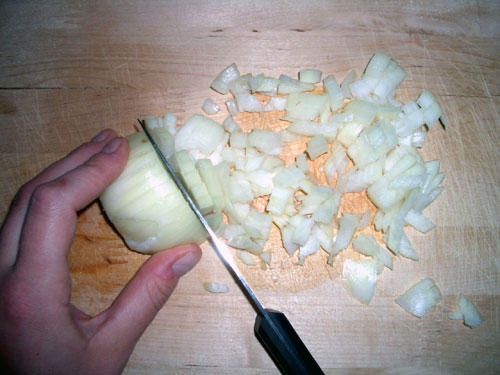
Finely dice 1 large white onion.
Next, finely dice 4-7 cloves of garlic. 
Add the garlic and onions to the saucepan and stir gently with a good wooden spoon. Turn down heat to low.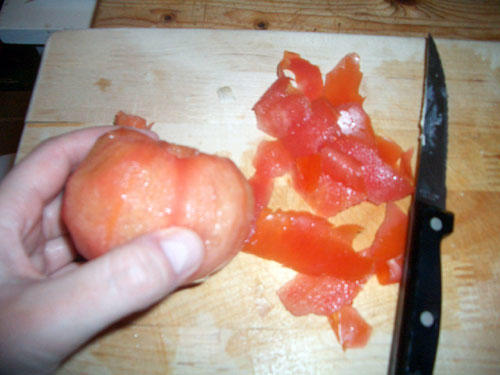
Now, peel the skin off 1 large tomato and remove the seeds. (Hint: the trick to peeling tomato skin is to first drop the tomatoes in a pot of boiling water and let them sit for 2-3 minutes. Carefully remove them from the water and then immediately submerge them in a pot of very cold water. This will cause the skins to crack and make them extremely easy to peel.) 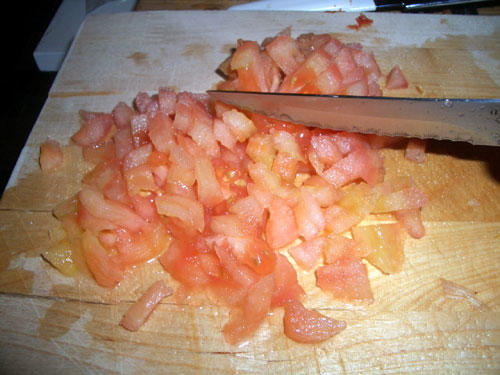
Finely chop the tomato and then set aside.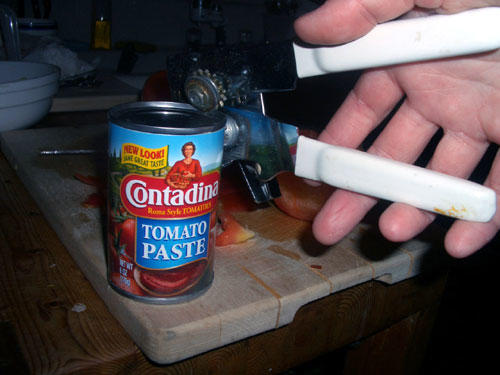
Open a can of tomato paste.

Add 2 tablespoons of the tomato paste to the saucepan.
Make sure that you mix it well.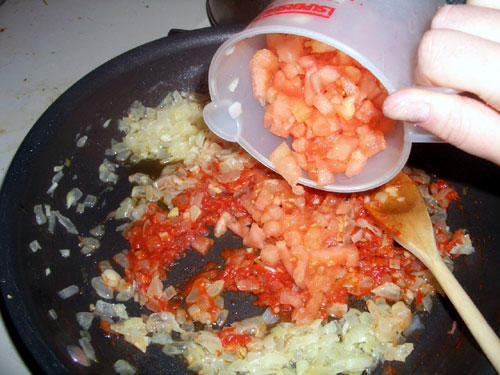
Now add the chopped tomatoes and stir the ingredients together.
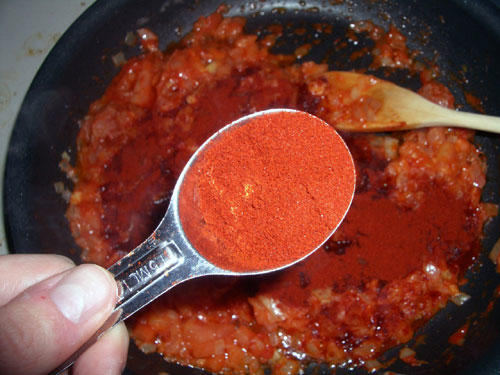
Measure out 2 tablespoons of paprika (the spicy Hungarian kind is best) and add to the mixture along with ½ teaspoon of ground red pepper. Since spices lose their flavor over time, use only the freshest ones you can find. If you can’t be bothered to update your old spice collection, try heating each spice in a pan for a few minutes before using it. This will bring out the original flavor of the spice and give your dish a more complex and intense taste.

Add 1½ cups of red lentils, thoroughly rinsed.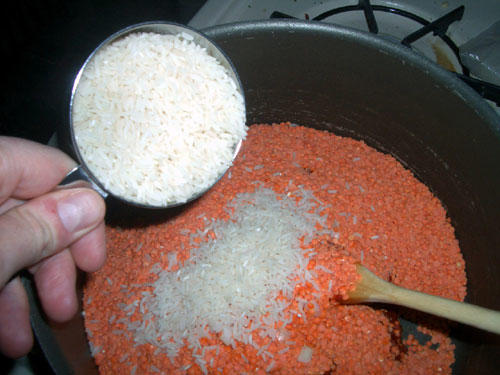
Add ¼ cup long grain white rice, thoroughly rinsed.
Add ¼ cup bulgur, thoroughly rinsed.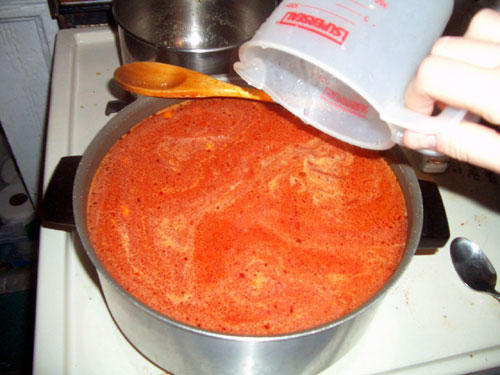
Add 6 cups of chicken stock and stir well. 
Add a dash of black pepper and salt to taste.
Last but not least, add 1-2 tablespoons of fresh dried mint. Cover and bring to a slow boil.
Stir occasionally until rice is cooked and lentils have blended in with the stock.
If the soup is too thick (it usually is), then add more water. Cooking time runs
approximately 1 hour. Do frequent taste tests to be sure!
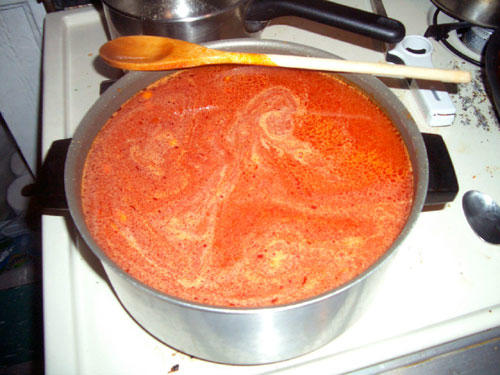
Once the soup has finished cooking, remove from heat and let it cool for 10 minutes.
Then, heat some butter on low heat in a small saucepan and add a pinch of mint and
paprika. Ladle the soup into bowls and dribble the butter mixture on top for a delicious
kick! Serve each with a lemon wedge and enjoy with a toasty hot slab of Turkish pide bread.
Afiyet Olsun! Bon appetit!
Dilek Barlow received a Master's degree in Middle Eastern Studies from CMES in 2004. Her academic interests include the study of Turkish and Arabic languages, economic development, education, cultural studies, and women's rights. She currently works in the CMES Outreach Center as a Curriculum Coordinator.
